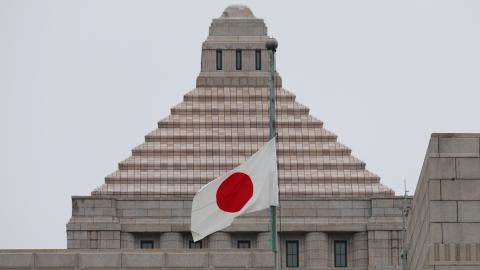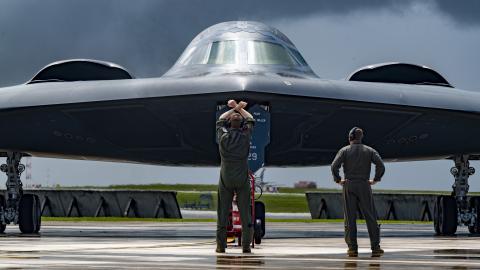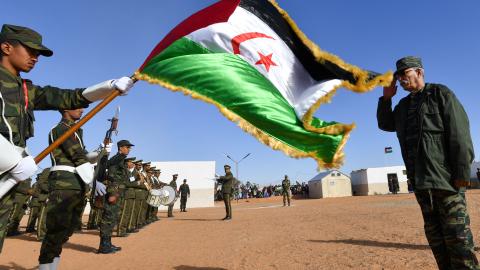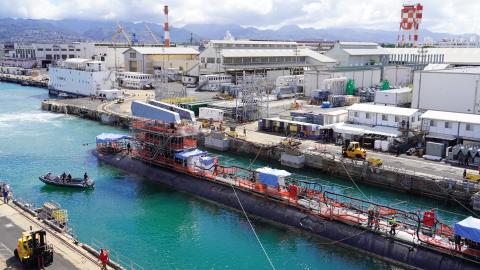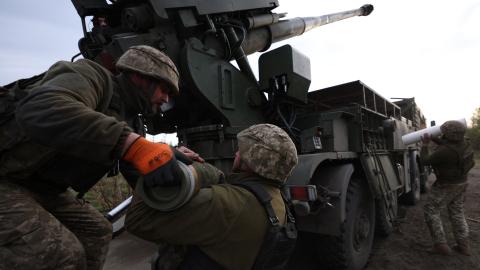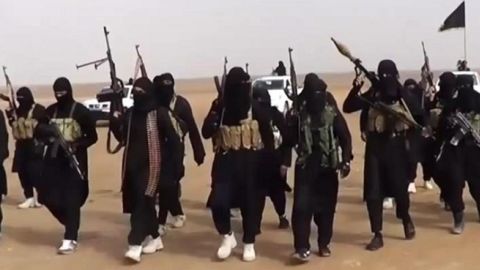A year ago the Islamic State first made headlines around the world by storming Mosul and conquering Iraq’s second-largest city. President Obama pledged to “degrade and ultimately destroy” the organization. Here we are a year later, and with ISIS now holding more territory—including other Iraqi cities like Ramadi—the Obama White House has yet to figure out how to degrade, never mind destroy, the organization. As Obama said last week at the end of the G7 summit in Germany, “We don’t yet have a complete strategy.”
Sending an additional 450 U.S. military advisers to Iraq, as the White House announced last week, is not a strategy, but a quick political fix meant to stifle domestic critics of the administration’s ramshackle Middle East policy. Indeed, the number of troops the president might send to Iraq is irrelevant until he defines what would constitute victory over the Islamic State.
The Bush administration’s Iraq surge succeeded not just because the United States sent an additional 20,000 troops to Iraq, but also because U.S. commanders partnered with the Sunni Arab tribes against the foreign fighters who made up Al Qaeda in Iraq. Obama could send the same number of troops to Iraq, or many more, and the White House would still not be able to win back the Sunni Arab tribes, because the difficulty in defeating ISIS is not simply one of troop strength. More fundamentally, it’s about policy.
The problem isn’t simply that Obama has failed to come up with a strategy to defeat the Islamic State. It’s something far more disturbing: The region-wide Sunni rebellion spearheaded by ISIS is the direct, dangerous fallout of the administration’s own Middle East policy. The president decided that a deal with Iran is the be-all and end-all of his second term in office. And to reach that deal, he would have to make nice with the clerical regime in Tehran, subordinating all other regional issues that might get in the way. This has meant tacitly or overtly siding with Iran’s beleaguered allies—the Assad regime in Syria and the Shiite-dominated Iraq government in Baghdad, among others. The White House has thereby helped push many of the Sunni Arab tribes who once fought against al Qaeda extremists into ISIS’s fold. ISIS and its tribal enablers will continue to advance unless the White House changes direction and turns against Iran, which the Sunni tribes of Iraq (and Syria) see as an even bigger threat than the Saudis, Chechens, Tunisians, and other foreign fighters of the Islamic State.
The December 2011 withdrawal of U.S. forces from Iraq left a vacuum that has been filled by Iran, in particular by Quds Force commander Qassem Suleimani. The U.S. departure left Iraq’s then-prime minister Nuri al-Maliki free to wage a sectarian campaign against the Sunnis, including the tribes who had fought side by side with American forces against Al Qaeda in Iraq. Without U.S. troops on the ground, all the Obama administration could do was petition Maliki to govern more inclusively. Left to fend for themselves, the Sunnis eventually lined up with the remnants of AQI as well as with the dead-enders from Saddam Hussein’s military and intelligence services who today constitute much of the Islamic State’s leadership. The Islamic State is in many respects simply the bloodiest and most fanatical part of a regionwide Sunni uprising against Iran’s imperial ambitions in the Middle East.
In March 2011, Syrian president Bashar al-Assad, another Iranian client, embarked on his own sectarian war against the Sunnis. Obama told Assad to step aside but did nothing to make it happen, even after Assad crossed Obama’s red line regarding the use of chemical weapons. In time, the Sunnis came to understand that what seemed like American impotence was in reality the White House expressing its preferences. In order to protect the nuclear deal with Iran, Obama was siding with Tehran’s allies and against Tehran’s rivals, the Sunni Arabs.
After idly watching as hundreds of thousands of Sunnis were slaughtered by Assad, the administration finally moved to protect Yazidis and Christians targeted by ISIS in Iraq. The White House said that there were no good guys in the Syrian conflict, but U.S. airstrikes targeted ISIS and other Sunni terror organizations, even while we promised Iran that we would avoid hitting Assad and Shiite terror groups like Hezbollah and the Iranian Revolutionary Guard Corps (IRGC). Administration spokesmen and media surrogates explained that the White House wasn’t going to set up a no-fly zone in Syria and thereby “serve as al Qaeda’s air force.” But when Suleimani and Iraqi militias couldn’t take Tikrit back from ISIS on their own, the administration had no problem tasking American pilots to, in effect, serve as the IRGC’s air force. The administration is similarly flying drones over Lebanon that feed intelligence to Hezbollah-controlled units of the Lebanese Armed Forces.
The White House may believe that it’s just fighting the Islamic State, but that’s not how it looks to the Sunnis in the Middle East. Iran and its allies, including Syria, Hezbollah, Baghdad, even under new prime minister Haidar al-Abadi, and Iraq’s Shiite militias, are at war with the Sunnis. Since Washington is now seen as Iran’s ally, the White House is also understood to be taking sides against the Sunnis, who happen to be the regional majority by a margin of nearly nine to one.
Iraq’s Sunni Arab tribes have thus lined up with ISIS because they don’t see a better choice. More U.S. troops on the ground aren’t enough to change their minds. Absent a change in policy, there will just be more Americans put in harm’s way on behalf of Iran’s interests. By partnering with Iran, the White House has only ensured that ISIS will grow, drawing its strength from the wider Sunni population.
One of the Obama White House’s most popular refrains, apparently applicable to every hot spot from Yemen to Ukraine, is that there is no military solution, only a political one. In this instance, the administration is silent, even though it’s clear the political solution—confronting Iran’s regional ambitions head-on—has to precede the military one.
As Gen. David Petraeus and the other U.S. commanders in Iraq showed in fighting AQI in 2007, the only way to defeat a menace like the Islamic State is to strip it of its base of support in the broader Sunni community. And the only way to do that is to make clear to the Sunnis that the United States is not going to leave them to the mercies of the Islamic Republic of Iran and its allies. To defeat the Islamic State, the Obama administration is going to have to turn against Iran first.
__This article originally appeared in the June 22, 2015, Vol. 20, No. 39 edition of the Weekly Standard.__


